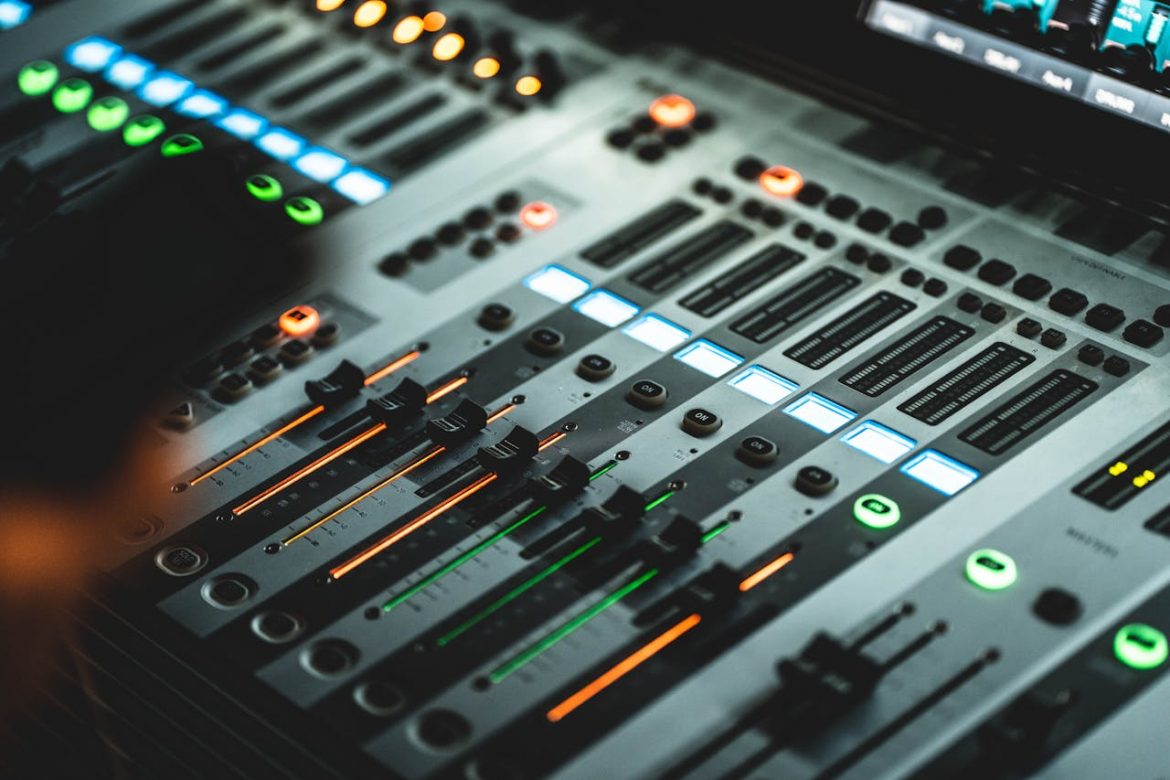Table of Contents
In the ever-evolving world of music, the art of mixing stands as a cornerstone, shaping the way we experience sound. Mixing is the process where multiple layers of audio are blended together, ensuring each element harmonizes with the others to produce the final track. This blog dives into the techniques and trends that are currently defining the landscape of modern sound mixing.
Traditional Techniques Still at the Core
At the heart of sound mixing are some traditional techniques that have stood the test of time. Techniques such as EQ (Equalization), compression, reverb, and panning are fundamental. EQ allows mixers to adjust the balance of frequencies in audio, making sure that each instrument or voice sits well in the mix without overpowering others. Compression helps in leveling out the dynamic range of audio, ensuring that no part is too loud or too soft. Reverb adds depth and space, giving the illusion that the sound is emanating from a certain type of room or hall. Panning, on the other hand, is the distribution of sound in the stereo field, helping to create a more immersive listening experience.
The Rise of Digital Mixing
The digital revolution has brought about significant changes in how mixing is done. Digital Audio Workstations (DAWs) like Ableton Live, Pro Tools, and Logic Pro have become the standard tools for mix engineers. These platforms offer a vast array of plugins and virtual instruments, making it possible to achieve almost any sound imaginable. The convenience of “in-the-box” mixing has opened up new creative possibilities and has made high-quality mixing more accessible to a broader range of creators.
Automation: Bringing Dynamics to Life
Automation is a game-changer in modern mixing. It allows for dynamic changes in the mix over time, such as fading in a track, adjusting EQ settings for a particular section, or changing effects parameters. Automation adds movement and life to a mix, making it more engaging and expressive.
Spatial Audio: A New Dimension of Sound
One of the most exciting trends in sound mixing is the advent of spatial audio. This technology offers a 3D audio experience, making it feel as though sounds are coming from all around and even above or below the listener. Platforms like Dolby Atmos are at the forefront of this innovation, revolutionizing how we experience music, movies, and games. Spatial audio adds a whole new layer to mixing, requiring mixers to think in three dimensions.
AI and Machine Learning: The Future of Mixing?
Artificial intelligence and machine learning are beginning to make their mark on the world of sound mixing. AI tools can assist in tasks like EQ matching, finding the perfect reverb, or even suggesting mix adjustments based on the style of music. While still in its infancy, AI in mixing promises to streamline workflows and potentially unlock new creative potentials.
In Conclusion
The art of mixing is an essential element of music production, blending science and creativity to shape the soundscapes that define our auditory experiences. From tried-and-true techniques to cutting-edge technologies like spatial audio and AI, the field of mixing is continuously evolving, pushing the boundaries of what’s possible in music and sound design. As we look to the future, it’s clear that the art of mixing will remain at the forefront of audio innovation, creating new ways for us to experience sound.


